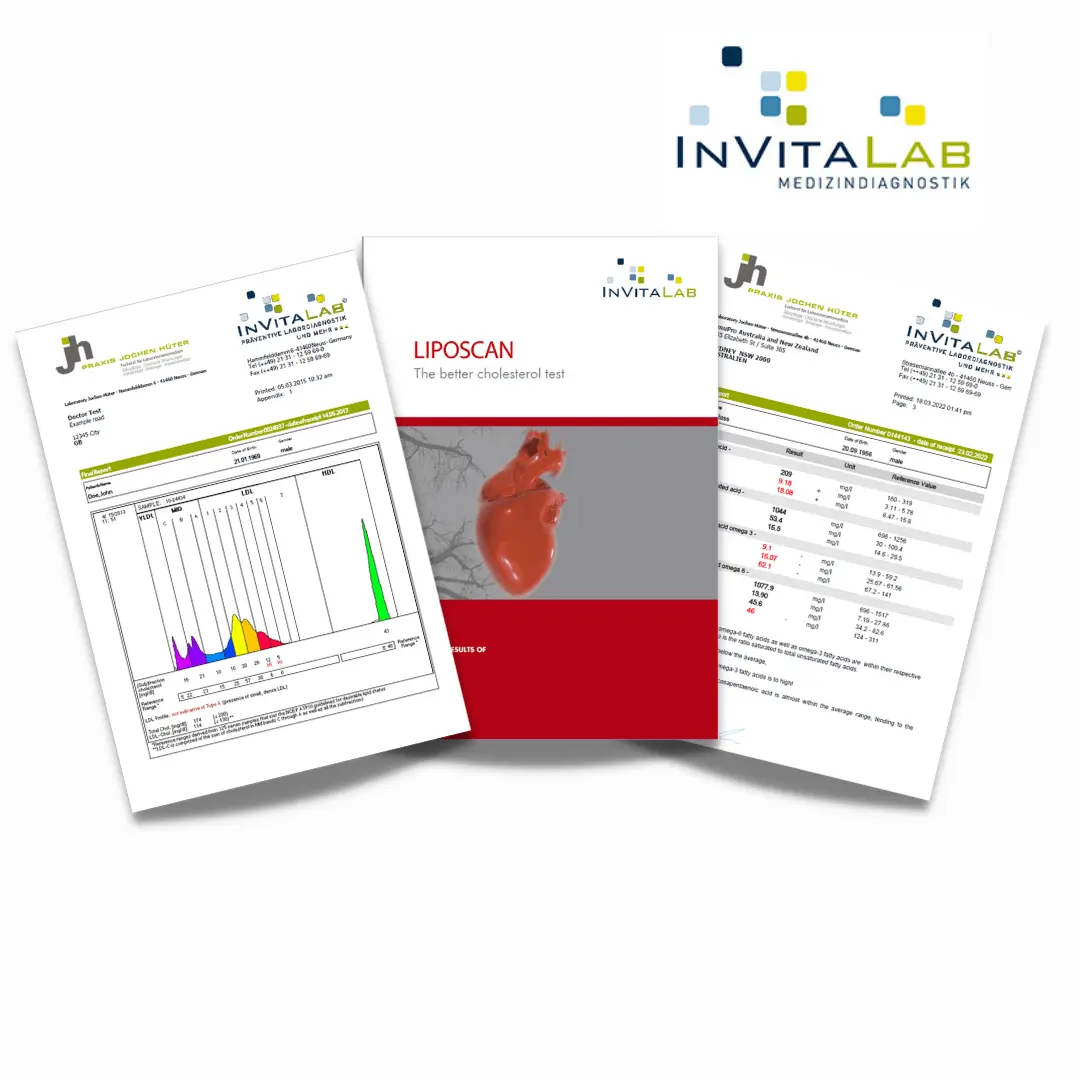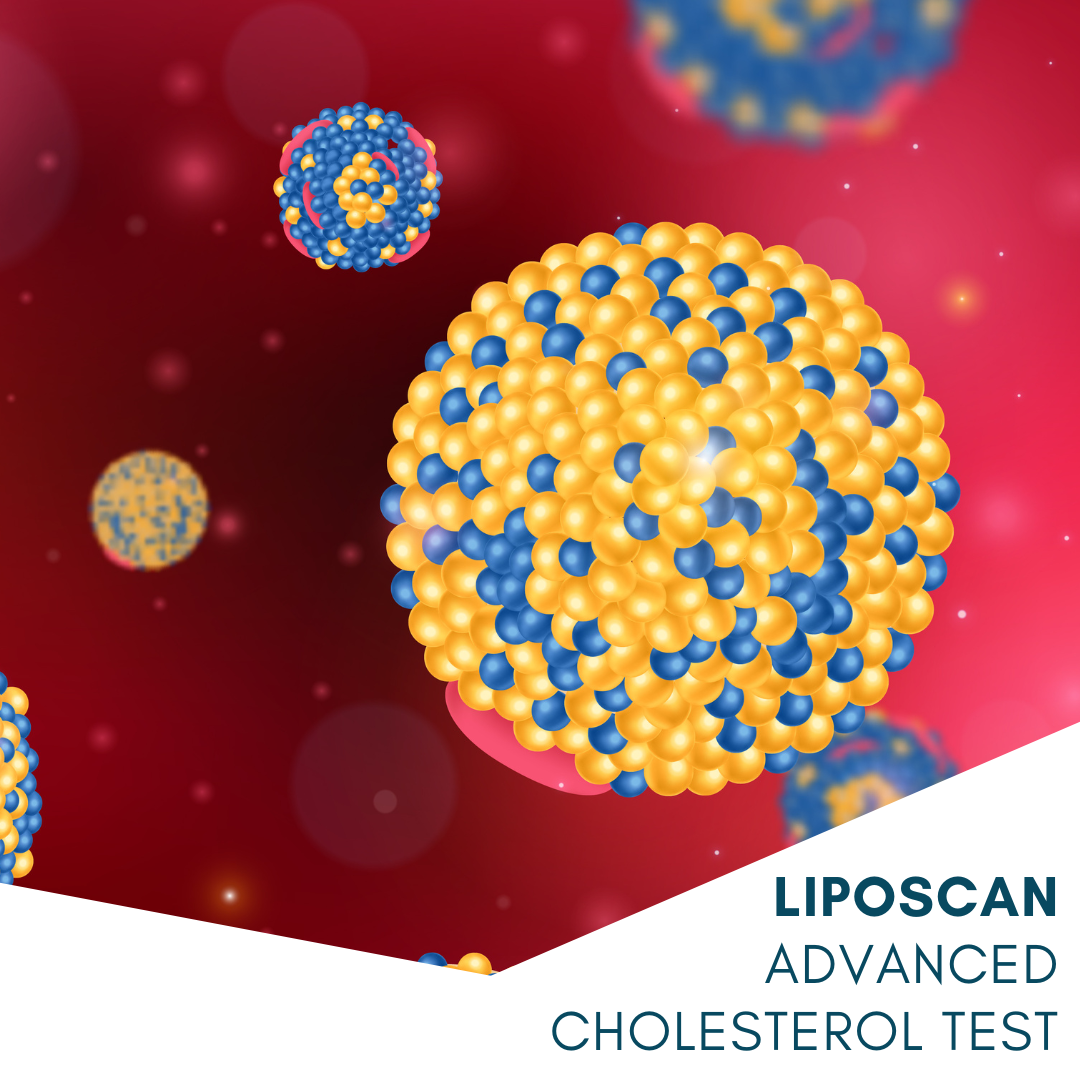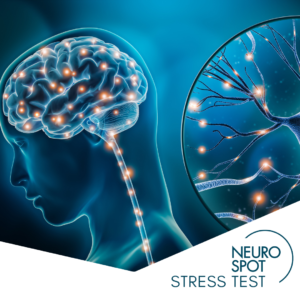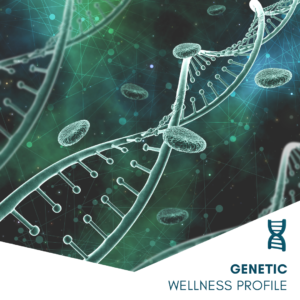LipoScan Advanced Cholesterol Test – Practitioner Referral
$320.00
Accurate Trusted Results
Phone
Support
100% Secure Checkout
An accurate and reliable cholesterol blood test
✔️ Used by GPs
✔️ National Cholesterol Education Program Adult Treatment Panel (NCEP ATP III) Approved
✔️ Accurate fasting serum testing
The LipoScan test provides your unique cholesterol fingerprint. Regular cholesterol tests are only a rough indicator and can fail to spot high-risk cholesterol levels, while returning misleading warnings for healthy people. The LipoScan bundle goes deeper than ordinary tests by analysing the small particle LDL sub-fractions (1-7) as well as the level of LDL oxidation. With this information you (and/or your practitioner) can plan further treatment or dietary adjustments to protect your cardiac health and your future.
The practitioner referral price is available only for patients with a valid referral from their health care practitioner. Payment must be made before your test can be processed. Referral letter must be provided to ImuPro prior to purchase. Referral letters cannot be shared – one referral per person is required. Results will be sent to your referring practitioner unless we receive written permission to send a copy to the patient.
LipoScan: Advanced Cholesterol Test
The diagnostic test that reveals your true cholesterol risk. The LipoScan test is a detailed and unique profile of the cholesterol in your blood. This helps your doctor plan further treatment or dietary adjustments to protect your cardiac health – and your future.
The LipoScan test reveals your true cholesterol risk by going deeper than ordinary tests and analysing LDL ‘sub-fractions’. LDL sub-fractions are a type of fat particle in your blood. These particles are absorbed by cells in the blood vessel wall and may contribute to arterial plaque build-up or coronary artery disease. LDL sub-fractions can conceal a high-risk cholesterol problem – even when your overall level of LDL cholesterol is “normal.”
The LDL particles measured with the LipoScan test are divided into seven different classes (see scale at top of the graphic). Only classes 3 – 7 represent a higher risk, whereas the other low-risk classes can cause a misleading high positive result in a conventional test.
Conventional cholesterol testing can’t detect this potentially dangerous condition and, until now, more detailed tests have been costly and hard to find.
What is Oxidated LDL?
Low Density Lipoprotein (LDL) cholesterol (known as the "bad cholesterol") can become oxidised when it reacts with free radicals in the body. Oxidised LDL is therefore less stable and more likely to cause damage to surrounding tissues, most notably the endothelial tissue which lines our blood vessels. In an attempt to repair this tissue damage, the body launches an inflammatory response by sending inflammatory chemicals such as macrophages and platelets to the site of the vessel. The atherosclerotic plaque forms when lipid particles, especially small dense LDL cholesterol accumulate at the site of inflammation - eventually slowing or completely restricting blood flow and leading to a variety of health conditions and possibly heart attack or stroke.
What will this test tell me?
The Oxidated-LDL Test offers analysis of arteriosclerosis risk and possible therapy through the identification of oxidised LDL cholesterol particles, determining your actual cardiovascular risk.
Once you know your level of oxidised LDL, you will know the potential progress of endothelial damage – which can eventually lead to a heart attack and other conditions, including stroke. After taking the ImuPro Oxidated LDL test, you can take any necessary action to reduce any health risks.
The Oxi-LDL test is a great add-on to the LipoScan test, with both tests able to be done together to give you a greater picture of your health.

With your test, you will receive:
- A therapist’s report outlining the results of your blood serum analysis – it is recommended this is taken to your practitioner for further advice on treatments or follow up
- A patient’s booklet explaining your results
Frequently Asked Questions
What is the benefit of testing for LDL subfractions and oxidation?
Clinical benefit for screening, treatment decisions and monitoring of lipid disorders associated with risks of coronary artery diseases:
1. Determination of the patient’s true atherogenic risk, reducing possibly counterproductive drugs
2. Carefully targeted therapy
3. Therapy control: particularly important since sometimes, in case of administration of cholesterol-lowering drugs, the total cholesterol decreases, but the atherogenic LDL particlesaccumulate. In this case, a normal LDL control would suggest a seeming therapy success.
What do I do with my results?
If high quantities of atherogenic LDL particles have actually been found, there will be the possibility to identify the cause of these findings. The interaction of various genes may be responsible in this case. They can be identified by means of a simple genetic test. This can be used to derive a specific, individual therapy for the patient. This therapy comprises both allopathic approaches using lipid-lowering drugs and the well-targeted change of living habits and nutrition. It is made clear to the patient using graphics what different ways of living mean in connection with their genetic profile. This makes it possible for the patient to make necessary adjustments.
Should I do the LipoScan if my total cholesterol is ok?
Yes. Demographic studies have shown that the classical lipid profiles of patients with coronary artery diseases do not significantly differ from those of healthy persons. Nearly 50% of people who develop a cardiac disease have “normal” cholesterol levels. LDL cholesterol, the lipid that is most frequently associated with cardiovascular diseases, is heterogeneous (different) and consists of up to seven subfractions. Large circulating LDL particles are less atherogenic. Small dense LDL particles are associated with a three times higher risk of cardiovascular diseases. Traditional lipid profiles do not identify the risk of cardiovascular diseases that are caused by the presence of small dense LDL and IDL particles. Dangerous LDL particles may hide behind normal cholesterol levels and, conversely, elevated cholesterol levels do not inevitably have to be associated with a heart attack risk. Patients supposed to need treatment (on account of high cholesterol levels) turn out to be not at risk, whereas persons supposed to be healthy (on account of normal cholesterol levels) turn out to be risk patients.
How long do results take?
Once we have safely received your blood serum samples they will be forwarded to our lab. Results take 10-20 business days and will be emailed to you (unless you have been referred by your healthcare practitioner).
What is the test method?
LipoScan separates and quantifies all lipoprotein (sub)fractions including the “large”, less atherogenic LDL-1 and LDL-2 and the “small”, highly atherogenic LDL-3 to LDL-7. Patient results are compared according to the NCEP ATP III guidelines. The test also measures VLDL and IDL cholesterol linked with type III dyslipidaemia and associated hyperlipoproteinaemias.
Can I get this test via my GP?
Yes, your GP can refer you for this test. Ask us for a GP referral form.
How can I get the LipoScan done?
Once you place your order we post your LipoScan test kit. This contains a pathology request form for your local collection centre, instructions, 2 transport tubes and 2 biohazard specimen bags. All you need to do is fast for 12 hours, then have your blood drawn at pathology. They will prepare your samples to be stable at room temperature and return them to you. Simply pop them in the provided transport tubes and send them back to ImuPro.
What can I expect from my results?
You will receive your lab report with quantitative values for each LDL particle as well as the level of oxidation and these will be presented on a graph. You will also receive your summary report which details what these findings need as well as options for treatment or further investigatons.







